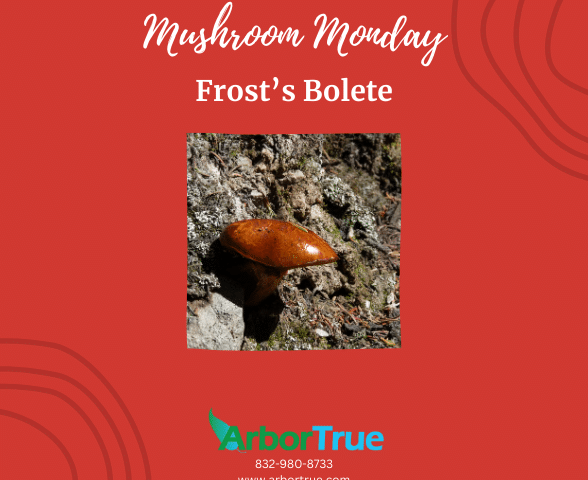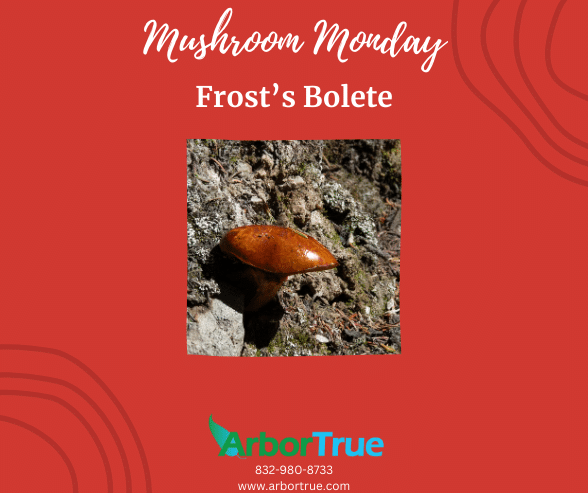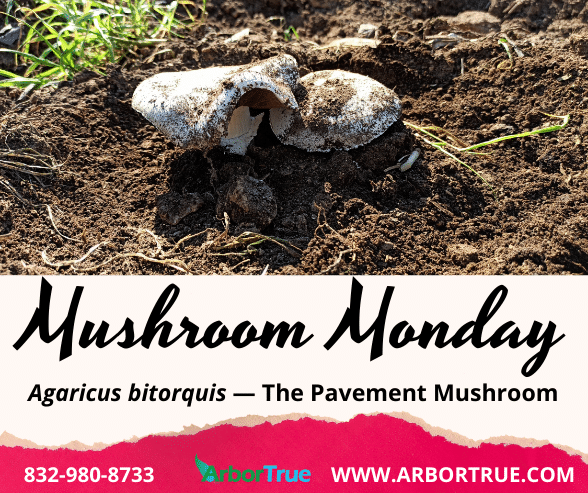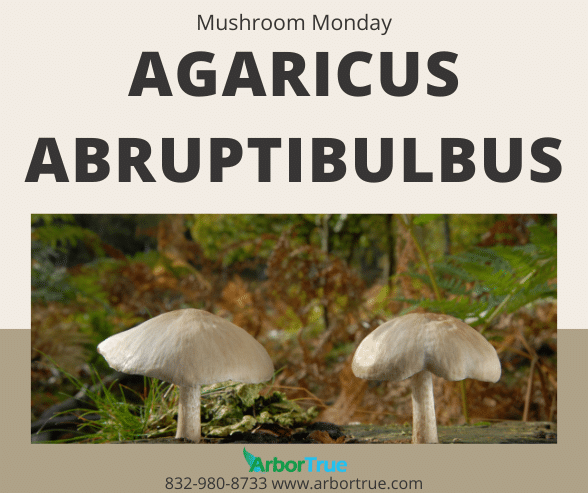
One Hundred New Blog Posts
June 17, 2024
The Challenges of Austin’s Changing Climate: A Guest Blog Post by Orion Stahlbaum
June 19, 2024
Mushroom Monday: Frost’s Bolete
Happy Mushroom Monday everyone. Today’s Mushroom Monday mushroom is Frost’s Bolete. It’s a deep red mushroom without gills. Learn more about it in today’s TrueTreeTalk post.
The Name
Frost’s Bolete was named after Charles Christopher Frost, who, among other things, studied mushrooms. The mushroom has had various scientific names including Butyriboletus frostii, Exsudoporus frostii, and Boletus frostii. Other common names include Candy Apple Bolete and Apple Bolete.
The Cap
The caps of Frost’s bolete mushrooms have a notable red color. They are convex, sticky when the mushrooms are young, have no hairs, and range in size from around 1.4 to 3.1 inches across. The edges of the caps have a yellow color.
They Have no Gills?
Like other bolete mushrooms, Frost’s bolete mushrooms don’t have gills. Instead they have pores with tubes. The spores of the mushrooms are on the inside of the tubes. We’ve looked at other mushrooms that don’t have gills, such as the beefsteak mushroom (although beefsteak mushrooms aren’t bolete mushrooms, they are polypores.)
The pores start out with a deep red color and turn more olive as the mushrooms mature. They have gold colored droplets coming from them when they are young.
The Stem
The stems have net-like ridges and grooves. They range in size from around 1.5 to 3.1 inches and are less than an inch thick.
Are There Similar Looking Mushrooms?
There are mushrooms that look similar to Frost’s bolete mushrooms. One example is Butyriboletus floridanus although its cap is less red and its stem doesn’t have as much of a net-like appearance. Other similar looking mushrooms include Boletus flammans and Boletus rubroflammeus.
Where do Frost’s Bolete Mushrooms Grow?
Frost’s bolete mushrooms can be found in the eastern part of North America and also in the Southwest and in Central America and Mexico. They are associated with hardwoods like oaks (they have a mycorrhizal relationship with them) and can be found in the summer through the fall growing from the soil either by themselves, scattered with others, or in groups. White mycelium might be seen at the mushroom bases.
They Change Color?
When Frost’s bolete mushrooms are bruised or sliced, they turn blue. This can happen in a short time and can be an interesting effect to see.
If you liked learning about Frost’s bolete mushrooms, check out our other Mushroom Monday posts on our TrueTreeTalk blog. Follow us on Facebook to keep up with these and other posts.
* * *
ArborTrue is a science-based tree-service company in the greater Houston area. We provide a range of services including tree trimming, tree pruning, tree removal, tree planting, arborist consultations, and more. Call us today at 832-980-8733 or reach out to us online to schedule an appointment.




